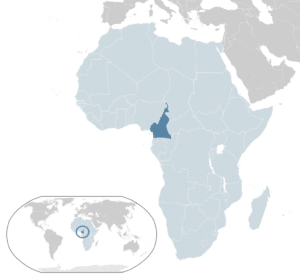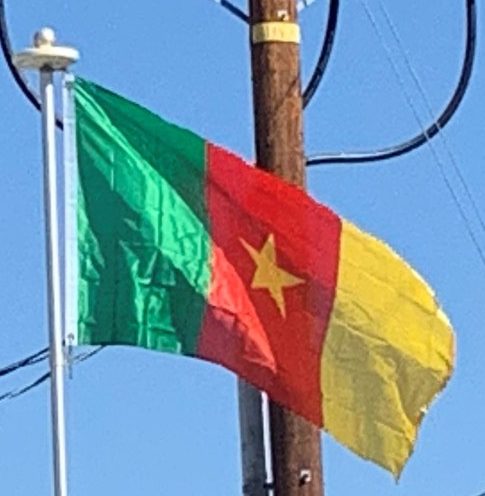Introduction:
Cameroon, officially the Republic of Cameroon, is a country in Central Africa. It is bordered by Nigeria to the west and north; Chad to the northeast; the Central African Republic to the east; and Equatorial Guinea, Gabon and the Republic of the Congo to the south. Cameroon’s coastline lies on the Bight of Biafra, part of the Gulf of Guinea and the Atlantic Ocean. Although Cameroon is not an ECOWAS member state, it is geographically and historically in West Africa with the Southern Cameroons which now form her Northwest and Southwest Regions having a strong West African history. The country is sometimes identified as West African and other times as Central African due to its strategic position at the crossroads between West and Central Africa.

Cameroon is home to over 250 native languages spoken by nearly 20 million people. The official languages of Cameroon are French and English, the languages of former colonial French Cameroons and British Cameroons. The country is often referred to as “Africa in miniature” for its geological and cultural diversity. Natural features include beaches, deserts, mountains, rain forests, and savannas. The highest point at almost 13,500 feet is Mount Cameroon in the Southwest Region of the country, and the largest cities in population-terms are Douala on the Wouri river, its economic capital and main seaport, Yaoundé, its political capital, and Garoua. The country is well known for its native styles of music, particularly Makossa and Bikutsi, and for its successful national football team.
Early inhabitants of the territory included the Sao civilization around Lake Chad and the Baka hunter-gatherers in the southeastern rain-forest. Portuguese explorers reached the coast in the 15th century and named the area Rio dos Camarões (Shrimp River), which became Cameroon in English. Fulani soldiers founded the Adamawa Emirate in the north in the 19th century, and various ethnic groups of the west and northwest established powerful chiefdoms and fondoms. Cameroon became a German colony in 1884 known as Kamerun.
After World War I, the territory was divided between France and the United Kingdom as League of Nations mandates. The Union des Populations du Cameroun (UPC) political party advocated independence, but was outlawed by France in the 1950s, leading to the Bamileke War fought between French and UPC militant forces until early 1971. In 1960, the French-administered part of Cameroon became independent as the Republic of Cameroun under President Ahmadou Ahidjo. The southern part of British Cameroons federated with it in 1961 to form the Federal Republic of Cameroon. The federation was abandoned in 1972. The country was renamed the United Republic of Cameroon in 1972 and the Republic of Cameroon in 1984. Large numbers of Cameroonians live as subsistence farmers. Since 1982 Paul Biya has been President, governing with his Cameroon People’s Democratic Movement party. The country has experienced tensions coming from the English-speaking territories. Politicians in the English-speaking regions have advocated for greater decentralization and even complete separation or independence (as in the Southern Cameroons National Council) from Cameroon. In 2017, tensions in the English-speaking territories escalated into open warfare.
History:
Pre-History:
The territory of present-day Cameroon was first settled during the Neolithic Era. The longest continuous inhabitants are groups such as the Baka (Pygmies). From here, Bantu migrations into eastern, southern, and central Africa are believed to have originated about 2,000 years ago. The Sao culture arose around Lake Chad, c. 500 AD, and gave way to the Kanem and its successor state, the Bornu Empire. Kingdoms, fondoms, and chiefdoms arose in the west.
